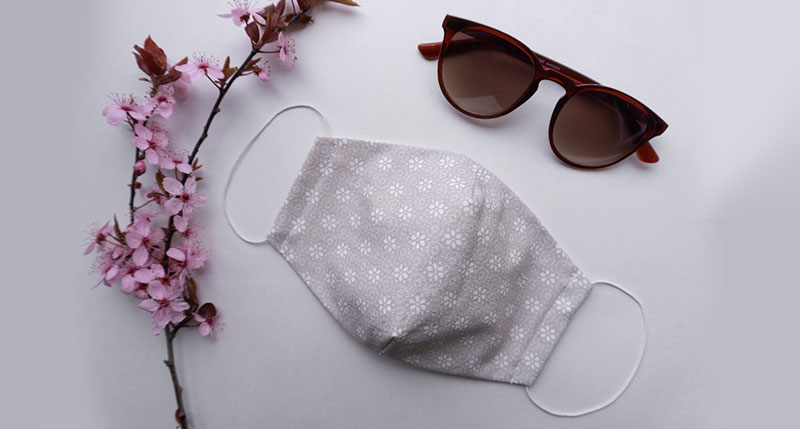How to Avoid Lens Fog while Wearing a Mask with Glasses
The White House coronavirus task force has confirmed that there is clear scientific evidence that wearing face masks is an effective way to limit the spread of coronavirus. People should wear face masks if they can’t maintain a proper social distance of 6 feet even when outside.
For those of us who wear glasses, this creates a new challenge: How to keep your eyeglasses from fogging up while wearing a face mask to slow the spread. It’s a frustrating new dilemma to solve.
Is it even possible? We say yes, with a few simple tweaks and some preparation.
First, let’s explore why glasses tend to fog up in the first place.
Why do glasses fog up while wearing a mask?
It’s a scientific fact: When warm air hits a cool surface, condensation is the result. It’s similar to how your glasses fog up when you open a hot oven, or in the summertime when you walk outside from an air-conditioned building into the heat.
Your face mask causes a similar set of circumstances. Your warm breath rises through the top of your mask and hits your eyeglass lenses, causing them to fog up. How can you prevent this unwanted circumstance?
5 Tips to Eliminate the Fog
It’s yet another challenge to confront in these days of coronavirus, but it’s one that can be overcome. Here are a few tips and tricks to keep your lenses from fogging up and obscuring your vision while you’re doing the right thing to slow the spread of this dangerous virus:
- Check the Fit of Your mask.
To prevent foggy vision, make sure your mask fits correctly.
Ideally, your face cover should fit snugly and securely over your nose. Try to find a mask with a bendable, shapeable fit on the nose bridge so you can secure it without airspace between your nose and the mask. That prevents the warm air you exhale from drifting up under the mask and fogging up those spectacles.
You can find shops online selling masks with this feature, or you can make your own. When sewing your own mask, insert a pipe cleaner, twist tie or thin wire into the nose bridge area of the mask so you can bend it to conform to the bridge of your nose. This can go a long way toward preventing that foggy feeling.
- Seal it With Your Specs
Depending on the size of your mask, you might be able to seal your mask from emitting your breath from the top by using your glasses on top of the mask when it’s pulled up high on your nose. If your mask will reach the bridge of your nose, this trick may work for you. Just pull the mask up as high as it will go and rest your glasses on top of it, doing your best to secure the fit. It’s similar to the results you’ll see when wearing a mask with a moldable nose bridge.
- Soapy Water to the Rescue
Much like how scuba divers use saliva on their masks to prevent fogging of the glass, you can use a thin film of soap residue to cut through the fog.
Here’s how to try this one: Take a clean soft cloth and dip it into mild, soapy water. Wash your lenses gently, and then shake them carefully to remove the excess liquid. Either let your lenses air dry or gently wipe them with a dry soft cloth. The soapy water will leave a thin film behind that can act as a barrier to fog formation.
- A Sticky Solution
Don’t forget about good old tape! Using low-stick tape that is forgiving to skin–such as sports tape or medical tape–simply tape your mask to your nose and cheeks around the bridge of your nose so that it maintains contact with your skin at all times to prevent fogging of your lenses.
Duct tape is not a good alternative for this, as it will stick to skin and may injure your skin when you peel it off.
If your skin is sensitive or thin, conduct a short duration “tape test” before you wear your mask taped to your skin for long periods of time. Or, explore tape alternatives for sensitive skin.
- Shop the Internet
If you’ve tried all of these techniques without success, search online for a product that provides a workable solution for you. There are sprays and wipes available to eliminate lens fogging. Be sure to double-check that the ingredients in them won’t compromise the protective coating (if any) on your lenses. And be sure you’re not allergic to any of the ingredients, since you’ll be spraying them on your glasses and they’ll be close to both your nose and eyes. Before purchasing, check the reviews to see how other consumers fared with the product you’re considering.
We hope our suggestions help to eliminate one of the annoyances of wearing a mask as we all do our part to limit the spread of this dangerous virus.

Recent Comments